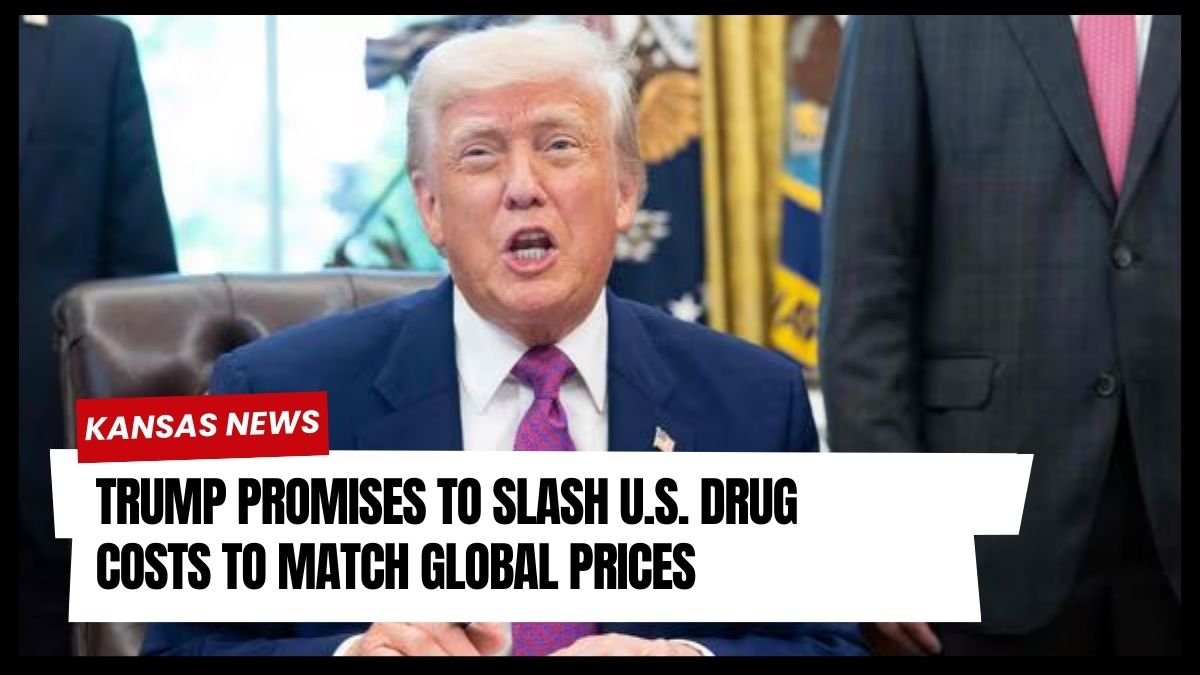President Donald Trump has announced plans to sign an executive order aimed at reducing the cost of certain medications in the United States.
This new order, which is set to be signed on Monday, is an effort to revisit a policy initiative from his first term, focusing on the rising costs of pharmaceuticals—a topic that has been a key point in his political agenda for years.
The Promise of Lower Drug Costs
The executive order will direct the U.S. Department of Health and Human Services (HHS) to implement a policy that ties the prices of certain medications covered under Medicare to the lowest price paid by other countries.
Trump’s proposal, which he calls the “Most Favored Nation’s Policy,” will align the cost of U.S. drugs with the most affordable prices paid by other nations globally.
The President promises that this policy will lead to significant reductions in healthcare costs for American citizens, claiming that the savings could reach unprecedented levels.
What Drugs Will Be Affected?
Under this plan, the focus will primarily be on Medicare Part B drugs—those that are administered in a doctor’s office, such as cancer treatments and other injectable medications.
While this change may offer substantial savings to the government, the projected savings of “TRILLIONS OF DOLLARS,” as claimed by Trump, may be an exaggeration.
The proposal will likely have a limited scope, only impacting a specific group of drugs and not those purchased at pharmacies.
Medicare beneficiaries, which include around 70 million older Americans, will be the primary beneficiaries, as these drugs are often part of their treatment plans.
Potential Savings and Challenges
In 2021, Medicare Part B drug spending exceeded $33 billion. Critics have long pointed out that the U.S. pays significantly more than other economically advanced nations for the same medications.
Trump’s policy aims to address this disparity by tying the price of U.S. drugs to what other countries pay for them.
However, this plan is expected to face strong resistance, particularly from the pharmaceutical industry, which argues that lower drug prices will hinder innovation and reduce profits.
Pharmaceutical companies have lobbied extensively against such measures, claiming that they would undermine the research and development of new drugs.
A Familiar Battle: Revisiting Past Attempts
This executive order revives a proposal Trump had attempted to implement during his first term. While he signed a similar order in 2020, a court blocked its implementation after President Biden took office.
Despite this setback, Trump remains committed to the idea of reducing drug prices, frequently criticizing the pharmaceutical industry for charging high prices in the U.S. while benefiting from government policies in other countries that limit prices.
Trump has also argued that drug companies have long used the justification of high research and development costs to explain the inflated prices Americans pay, and he has vowed to put an end to this practice. In his post, he emphasized that the Republican Party would do the “right thing” by pursuing this initiative.
Medicare Part B: Impact on U.S. Healthcare
The plan will specifically address medications covered under Medicare Part B, which covers drugs administered during doctor visits. Patients who are enrolled in traditional Medicare currently face no out-of-pocket cap on these costs, leading to potential financial strain.
For the proposed order to be successful, it would have to overcome political and legal hurdles, especially given the historical pushback from the pharmaceutical sector.
A recent report from the Trump administration revealed that U.S. spending on these medications is more than double what some other countries spend on similar treatments.
This has long been a point of contention for both political parties, but no significant reforms have passed Congress to address the issue.
Will This Policy Work?
While Trump’s plan could potentially lead to savings for the U.S. government, whether it will have the desired impact on Americans’ healthcare costs remains uncertain.
It remains to be seen how effective this executive order will be in achieving its goals, especially given the political challenges and opposition from powerful pharmaceutical lobbyists.
President Trump’s executive order promises to take significant steps toward addressing high drug prices in the United States, particularly for Medicare beneficiaries.
While it remains to be seen how effective the policy will be, its introduction highlights the ongoing issue of drug affordability in the U.S. and the challenges in finding long-term solutions to this complex problem.
The proposal’s success will depend not only on its implementation but also on overcoming the opposition from pharmaceutical companies and other stakeholders.




